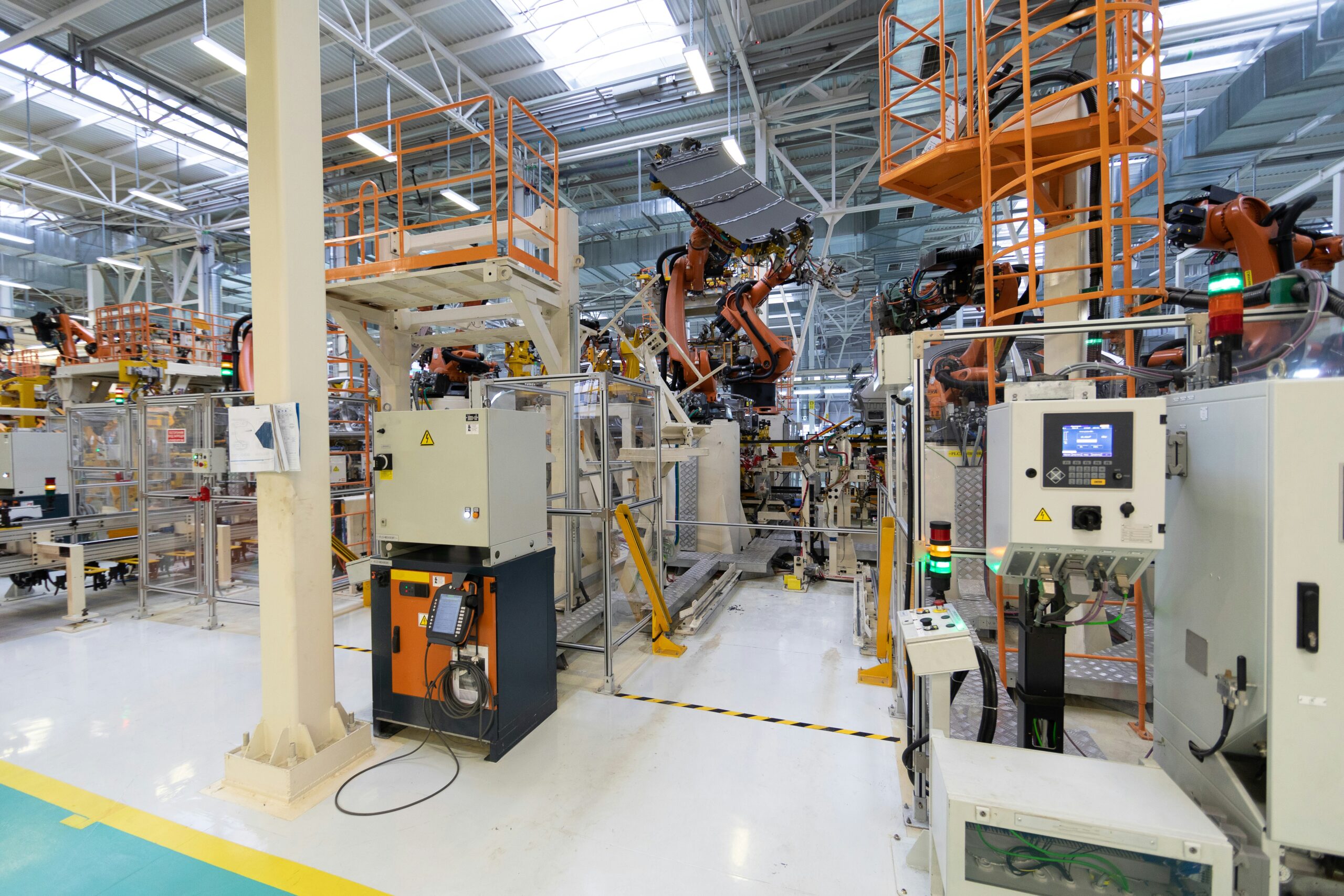
The manufacturing industry is transforming significantly thanks to advancements in smart factories and automation technology. As businesses look for ways to increase efficiency, reduce costs, and improve product quality, these innovative solutions are rapidly gaining traction. Let’s explore how smart factories and automation are revolutionizing the manufacturing landscape.
What Are Smart Factories?
Smart factories are production environments integrating cutting-edge technologies, such as the Internet of Things (IoT), artificial intelligence (AI), robotics, and big data analytics. These technologies enhance decision-making, optimize production processes, and enable real-time monitoring. A key characteristic of smart factories is their ability to communicate seamlessly with machines, sensors, and software systems, allowing them to self-regulate and operate more efficiently without constant human intervention.
In a smart factory, machines can collect data about their performance, send it to central systems, and adjust their operations accordingly. This real-time feedback loop helps ensure production lines run at peak efficiency, reducing downtime, minimizing waste, and improving overall productivity.
Automation: The Backbone of Modern Manufacturing
Automation is using technology to perform tasks that traditionally require human labor. It has been a game-changer in manufacturing, enabling businesses to streamline operations, increase throughput, and cut costs. This process can range from simple tasks like machine operation and material handling to more complex activities like quality control and assembly.
In today’s manufacturing plants, robots are often employed to carry out repetitive and dangerous tasks. Automated machines can handle welding, painting, and assembly with speed and precision, reducing the risk of human error. Implementing automation allows manufacturers to operate 24/7, ensuring that production cycles are faster and more efficient.
Automation is not just limited to physical robots on the factory floor. Software solutions like enterprise resource planning (ERP) and supply chain management systems are vital in automating administrative tasks. These tools help manufacturers track inventory, manage orders, and optimize scheduling, ensuring that production runs smoothly from start to finish.
The Role of Artificial Intelligence and Machine Learning
Artificial intelligence (AI) and machine learning (ML) are at the heart of many innovative factory technologies. AI uses algorithms to simulate human intelligence, enabling systems to make decisions, recognize patterns, and solve problems. AI can be used in manufacturing for predictive maintenance, quality control, and process optimization.
For instance, predictive maintenance relies on AI to analyze data from machines and predict when they are likely to break down. By identifying potential issues before they occur, manufacturers can perform maintenance in advance, reducing costly downtime and extending the life of their equipment.
Machine learning, a subset of AI, is also used to improve product quality. ML algorithms can detect anomalies by analyzing vast production data and recommend adjustments to improve the manufacturing process. This can result in higher-quality products and more efficient production methods.
Benefits of Smart Factories and Automation
Integrating smart factories and automation offers several key benefits for manufacturers, including increased efficiency, reduced costs, and enhanced product quality. Here are some of the most notable advantages:
- Increased Efficiency: Smart factories can operate around the clock, continuously monitoring and adjusting machines to ensure optimal performance. Automation eliminates bottlenecks, reduces downtime, and increases production speed, leading to more efficient operations and higher output.
- Cost Savings: Automation reduces the need for manual labor, lowering labor costs. Moreover, the precision of automated systems minimizes waste and improves resource utilization, leading to further cost savings. Over time, the investment in automation technology pays off through improved profitability.
- Improved Quality: Automated systems are designed to follow precise instructions, reducing the risk of human error. This results in consistently high-quality products. Additionally, using AI and machine learning in smart factories helps identify quality issues early, enabling manufacturers to adjust before products reach customers.
- Greater Flexibility: Smart factories are highly adaptable to changing production demands. Manufacturers can quickly reconfigure production lines, adjust product designs, and scale operations to meet market needs. This flexibility is essential in today’s fast-paced business environment, where customer preferences constantly evolve.
- Sustainability: Automation and innovative factory technologies contribute to sustainability by minimizing waste and reducing energy consumption. Energy-efficient machines, optimized production schedules, and better material usage all help reduce the environmental footprint of manufacturing operations.
The Future of Smart Factories and Automation
As technology continues to evolve, the potential of smart factories and automation will only grow. One of the most exciting developments is the rise of digital twins, virtual replicas of physical assets. Digital twins allow manufacturers to simulate real-world processes in a virtual environment, enabling them to test new strategies and optimize production before implementing changes on the factory floor.
The future of manufacturing will also see increased integration with cloud computing and the expansion of IoT networks. These technologies will enable manufacturers to gather more data, analyze it in real-time, and make informed decisions that drive performance improvements. As 5G networks become more widespread, the ability to transfer large amounts of data quickly will further enhance the capabilities of smart factories.
Another trend to watch is the growing role of collaborative robots or cobots. Unlike traditional industrial robots, cobots are designed to work alongside human operators, offering assistance without replacing workers entirely. These robots are becoming more common in manufacturing environments, where they can handle repetitive tasks while allowing workers to focus on higher-value activities.
Despite the many benefits of smart factories and automation, manufacturers must also address challenges. For example, the initial cost of implementing innovative technologies can be high, and small—to medium-sized manufacturers may struggle to justify the investment. Additionally, there are concerns about job displacement, as automation can reduce the need for human labor in certain areas.